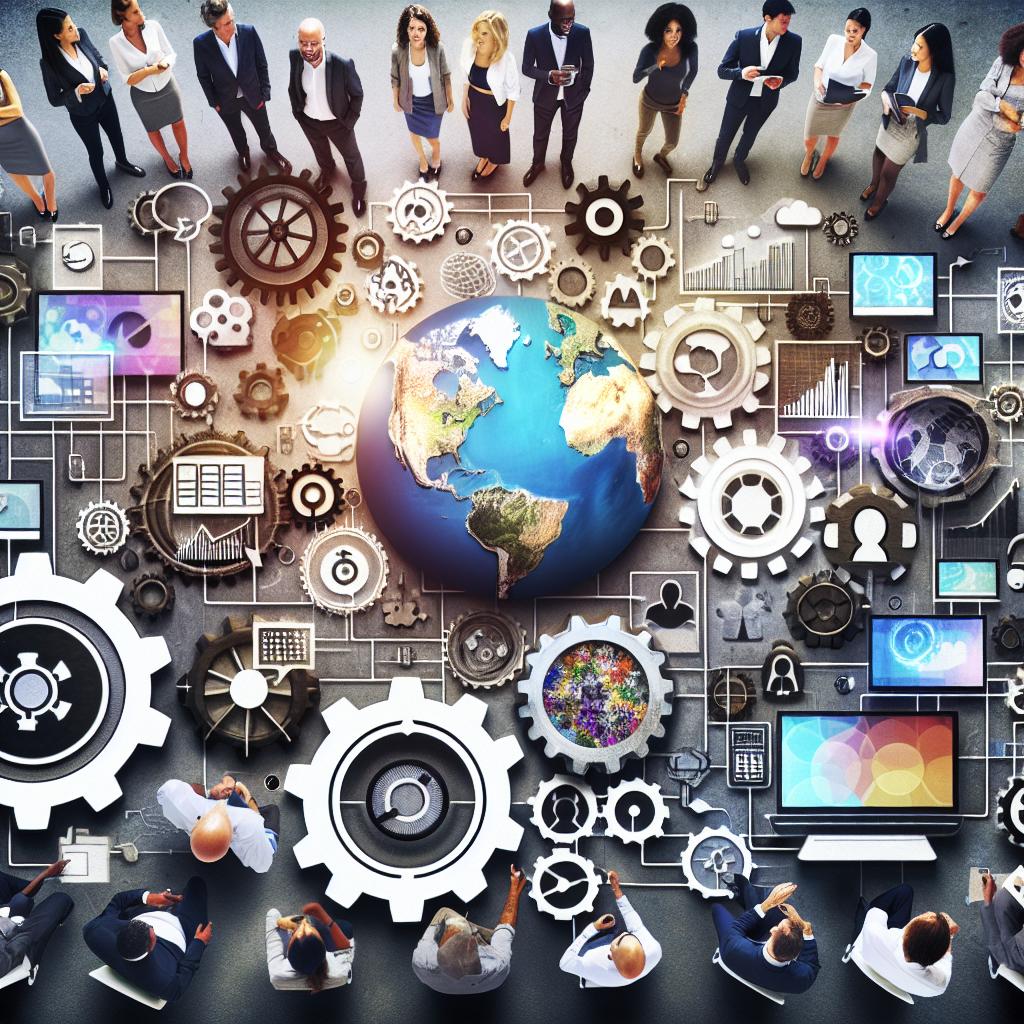Virtual and Human Influencers: The Future of Marketing in Mexico City
In the vibrant heart of Mexico City, the world’s buzzing with excitement about how new technology is shaking up the influencer scene. Just recently, a young woman caught everyone’s attention at the TikTok stand during the international influencer convention, Vidcon. She showcased a virtual image of herself, blending the worlds of digital creativity and social media stardom. It’s a perfect example of how rapidly influencer marketing is transforming.
The Intersection of Two Worlds
Influencer marketing has come a long way from its humble beginnings. Initially seen as a trend, it’s now a multimillion-dollar industry that’s influencing brand strategies on a global scale. At the same time, the rise of artificial intelligence (AI) brings in a wave of digital and synthetic influencers, completely reshaping the landscape. For the tech-savvy Generation Z, who is always glued to their screens, there’s an undeniable demand for both human authenticity and the spice of virtual creativity. So, how can brands strike the right balance between these two types of influences?
Are Human Influencers Still on Top?
For now, human influencers are still the reigning champions in the realm of popularity and revenue. Research shows that human influencers make on average 46 times more than their AI counterparts. However, virtual influencers are on the rise. In fact, industry experts estimate that the market for AI influencers could soar to $37.8 billion by 2030. With figures like Lil Miquela, a digital avatar boasting over 3 million followers, it’s clear that brands need to pay attention.
The Perks of AI Influencers
AI influencers offer something pretty special for brand marketers. With their ability to operate around the clock and communicate in multiple languages, they can engage audiences at any time. Plus, they’re cost-effective! Switching from using human influencers to AI can reduce campaign costs by up to 30%, making it an appealing choice for big businesses looking to make an impact.
Consider Lu do Magalu, a digital avatar belonging to the Brazilian retailer Magazine Luiza. While promoting products, Lu not only engages with customers but also provides personalized suggestions. This is a great way for brands to maintain a consistent image while connecting with audiences on a personal level.
Challenges and Ethical Concerns
As exciting as the world of AI influencers is, it’s not without its challenges. Authenticity remains a big issue because many consumers crave that genuine connection. A study points out that over 58% of consumers prioritize authenticity when following influencers. While human influencers excel at forging emotional connections through personal stories, AI avatars miss out on that depth, which could hinder their long-term appeal.
Moreover, ethical questions are arising about transparency. AI influencers operate based on algorithms, meaning they can’t provide genuine reviews. As regulations tighten, particularly in places like Spain, brands need to be wary of how we perceive these algorithms.
A Shift in Preferences Among Gen Z
Despite these ethical dilemmas, younger consumers are increasingly leaning toward virtual influencers. Surveys indicate that a whopping 81% of Gen Z follows influencers online, and many are fascinated by the idea of interacting with digital beings. It seems that for many, the need for personalized and dependable interaction often outweighs the emotional connection.
A Future with Both Human and Virtual Influencers
As we look to the future, it seems unlikely that human influencers will be completely replaced. Instead, a hybrid model might emerge, blending the unique strengths of human and AI influences. Notably, brands are already experimenting with this balance. Take Kellogg’s, for instance, which modernized Tony the Tiger to engage in real-time on social media—a perfect mix of nostalgia and modern interaction.
What Lies Ahead?
As the influencer marketing industry continues to evolve, brands face an exciting challenge: embracing new technology while keeping genuine connections alive. While AI influencers provide undeniable benefits, human influencers still hold a warm spot in the hearts of consumers due to their authenticity and emotional depth. Moving forward, the key will be for brands to find ways to harmonize these two worlds, creating meaningful engagements that resonate with their audiences.
The world of influencer marketing is poised for a bright future, where we no longer see AI as a competitor but rather as a creative partner. As Generation Z enters the workforce, the question arises: will the influencer dream job as we know it still exist? Time will tell.








